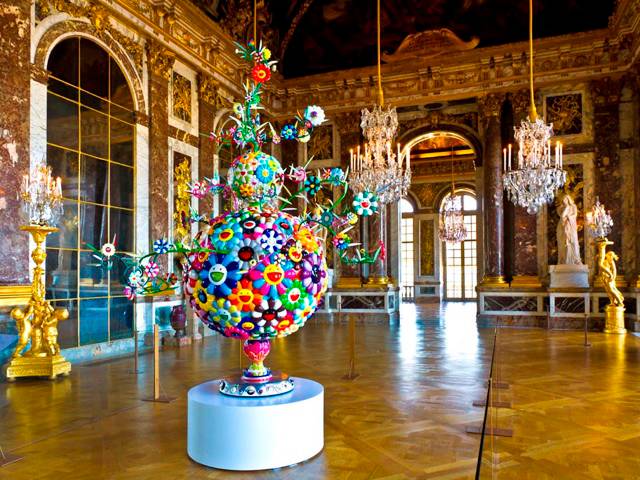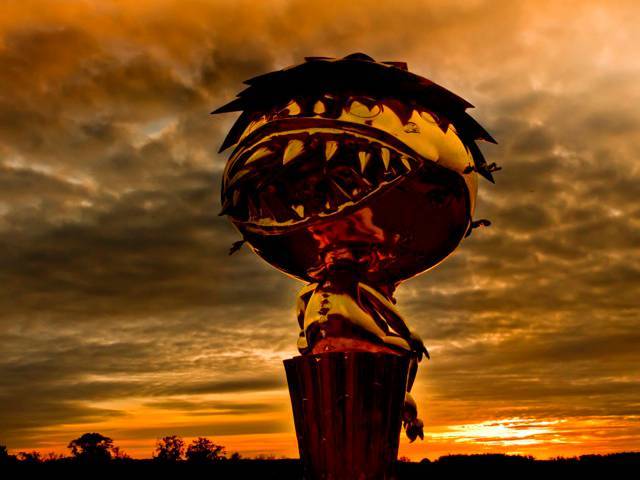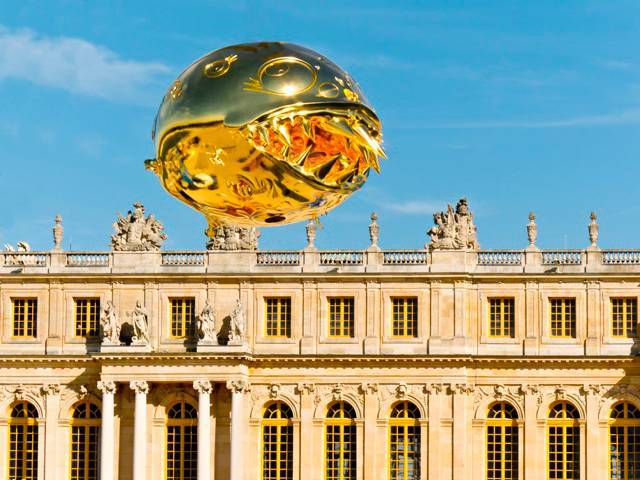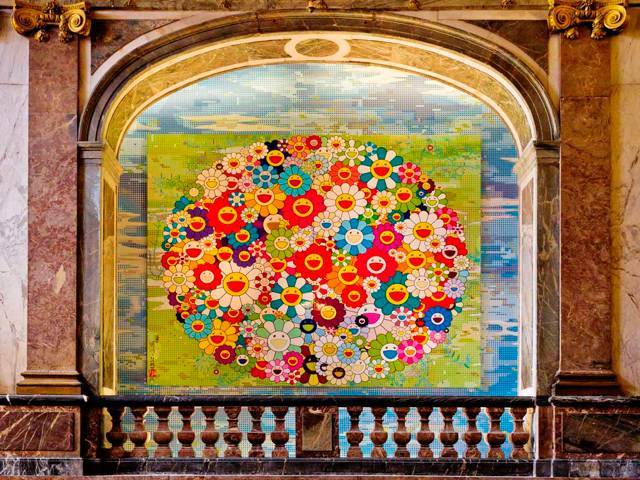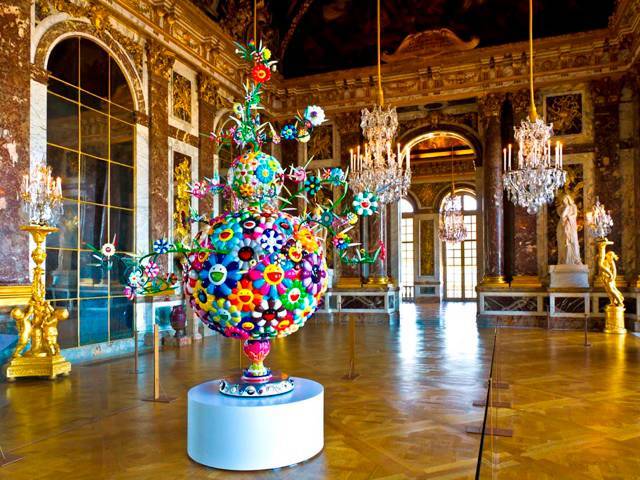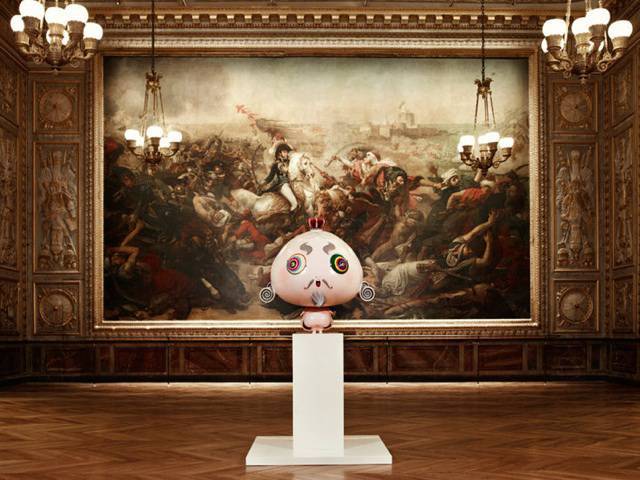Two oversized, tendril-sprouting globes covered with cartoonish grinning flowers in eye-popping pinks, greens and yellows are just about the last thing you'd expect to see in the Hall of Mirrors, the long, gilded gallery that's considered the jewel of France's most awe-inspiring of palaces, Versailles:
As part of a contested new exhibition, the psychedelic piece, "Flower Matango," and a dozen other monumental sculptures by celebrated Japanese artist Takashi Murakami are now rubbing elbows with the treasures of Versailles -- magnificent tapestries, marble sculptures and paintings by 18th century masters.
That proximity between old and new -- between the charged Baroque style and that of Japanese comic books, or mangas -- is making some people uncomfortable.
Even before the exhibition's official opening Sept. 13, "Murakami Versailles" sparked a storm of criticism from groups who denounced the show as inappropriate.
Murakami's known for his outrageous, manga-influenced aesthetic and his lucrative collaboration with luxury bag-maker Louis Vuitton. The groups complained that his work has no place in rooms once belonging to France's Sun King, Louis XIV.
Speaking at a news conference Thursday at the sprawling palace, west of Paris, Murakami dismissed the controversy as a "misunderstanding."
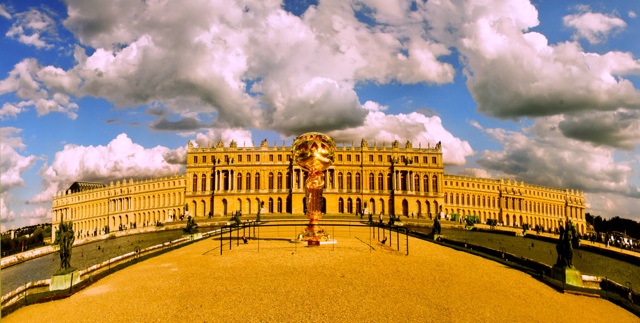
He said "Murakami-bashing" is a favorite sport both in France and in his native Japan and chalked up the brouhaha to jealousy.
When I hear such things, I say to myself that when a (sports) team scores a goal, there are always people who aren't happy about it and who express that" discontent, he said through an interpreter. The exhibit's meant to be a sort of "face-off between the Baroque period and postwar Japan, and I hope it will create in visitors a sort of shock, an aesthetic feeling.The president of the Chateau de Versailles, Jean-Jacques Aillagon, called it his "duty" to "open the palace to the artistic creation of our times."
"Works of art cannot be ghettoized in narrow categories," said Aillagon. His decision to bring contemporary American artist Jeff Koons to Versailles two years ago elicited a similar wave of criticism. "This coexistence (between Murakami and Versailles) is a just one and it makes sense."
Aillagon pointed out that Louis XIV and his successors were obsessed with the contemporary art of their times and were constantly demolishing parts of the palace to have them rebuilt and decorated by the finest artists and artisans of their day.
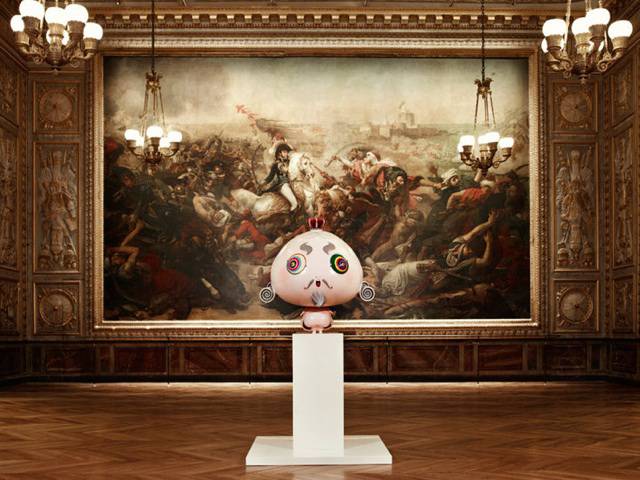
It's undeniable that Murakami's work jazzes up the royal reception rooms.
On display in the "Salon de Venus" -- where Louis XIV's guests once gorged themselves on copious banquets -- plump Murakami figurines with rabbit ears and scepters mirror the self-assured stance of a 1672 marble sculpture of Louis XIV in Roman dress.
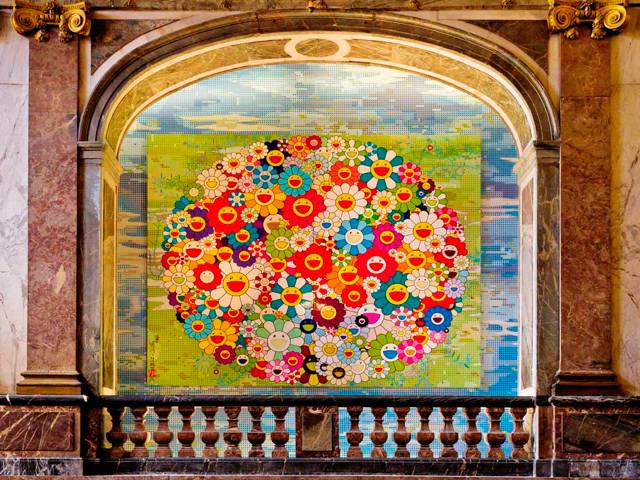
"The Simple Things," a cheeky 2005 commentary on conspicuous consumption that glitters with precious stones, is right at home in Queen Marie-Therese's antechamber. The blob-shaped sculpture opens its snaggletoothed mouth wide to reveal a diminutive can of Pepsi, a Heinz ketchup bottle and a packet of Doritos -- all covered in rubies, diamonds, sapphires and emeralds.
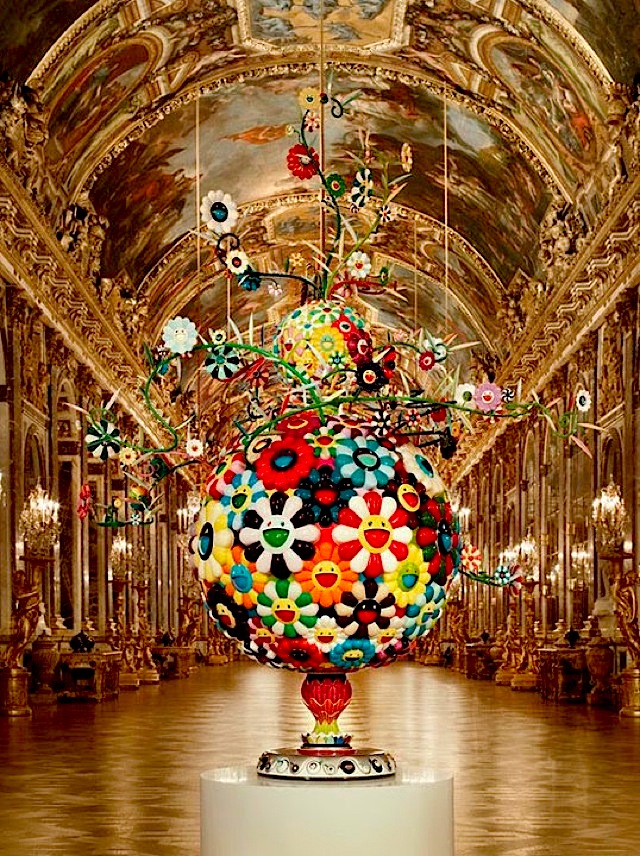
"Yume Lion," a lion with a tiny body and huge, moon-shaped face, presides over the "Salon d'Apollon," which was the king's bedroom before becoming the throne room and used only on the most solemn of occasions. Made out of aluminum, the lion is covered in gleaming gold leaf that shines nearly as bright as the Sun King himself.
The towering, 2004-2005 fiberglass sculpture "Tongari-Kun" features a mutant frog with dozens of grasping, waving human hands sprouting from its torso and an oversized head that tapers into a kind of horn, drawing the viewer's attention to the ceiling.
At Versailles, where practically no surface is left unadorned, visitors' eyes tend to gloss over most of the ornate decorations without really seeing them. But with a 23-foot- (7-meter-) tall frog pointing straight at it, the ravishing ceiling painting by 18th century court artist Francois Lemoyne is impossible to miss.
 Critics cited the overtly sexual nature of one of Murakami's best-known pieces, the 1998 sculpture of a masturbating boy, "My Lonesome Cowboy," -- not present at the exhibition -- as (missing) evidence that his work was inappropriate for Versailles. In fact, the sculptures on display here are family friendly.
Critics cited the overtly sexual nature of one of Murakami's best-known pieces, the 1998 sculpture of a masturbating boy, "My Lonesome Cowboy," -- not present at the exhibition -- as (missing) evidence that his work was inappropriate for Versailles. In fact, the sculptures on display here are family friendly.
The raciest piece is "Miss ko2," a busty blonde that looks as if she just stepped out of a manga on her impossibly long, willowy legs. Placed in front of wall of mirrors at the entrance to the iconic Gallerie des Glaces, or Hall of Mirrors, you can just make out the reflection of her panties beneath her tiny skirt.
"I'm not an erotic artist, just because I did a few erotic sculptures once," Murakami said. "I'm just a regular artist."
"Murakami Versailles" runs through Dec. 12.
